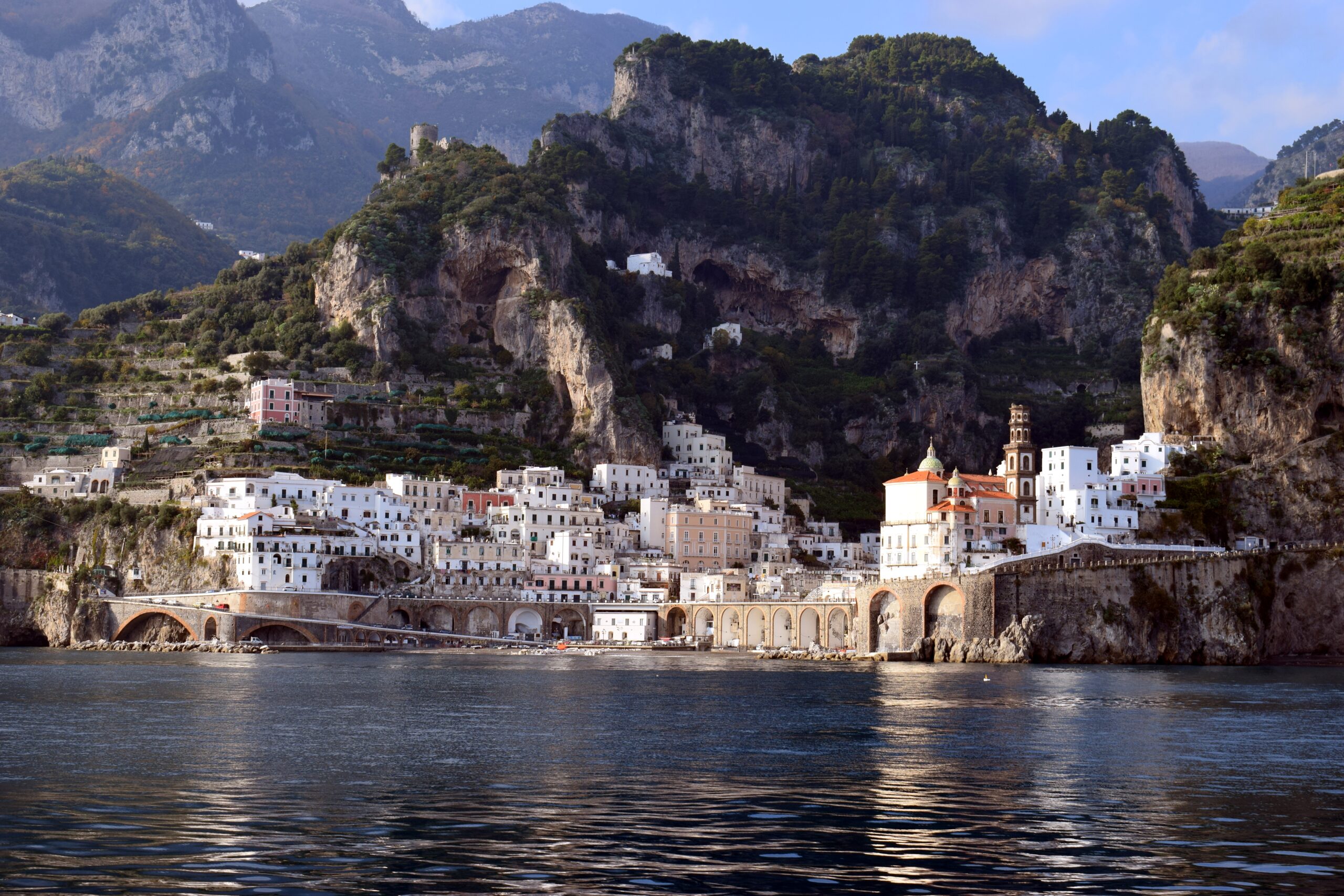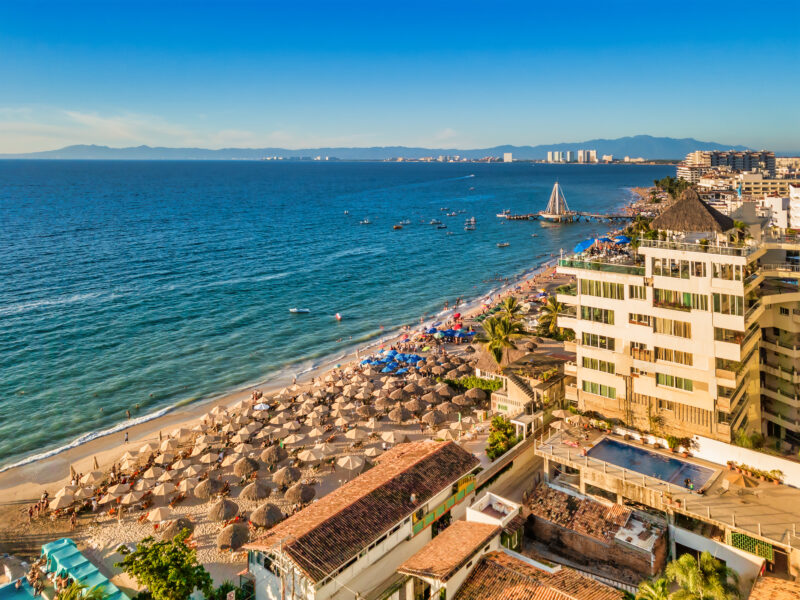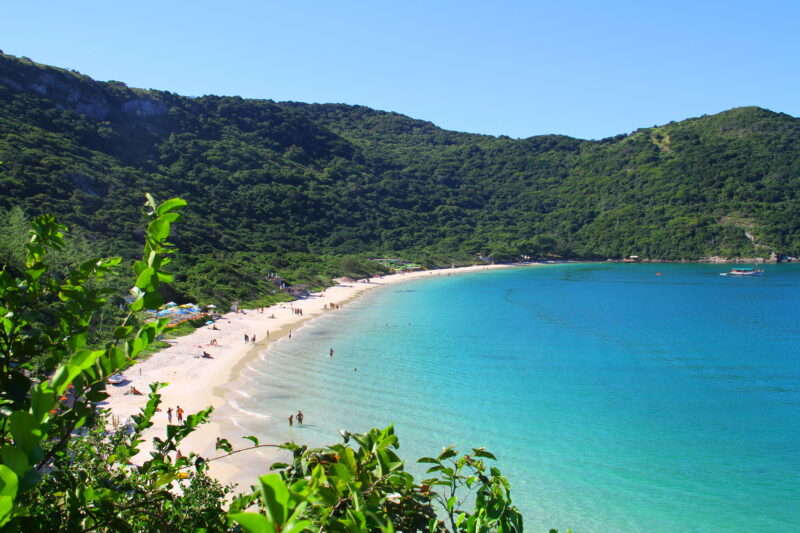The Amalfi Coast will mesmerize you. The combination of gargantuan mountains, the endless Tyrrhenian sea, and the vertical old towns never ceases to amaze. “It is a dream place that isn’t quite real when you are there and becomes beckoningly real after you have gone,” wrote John Steinbeck about this heavenly corner south of Naples. It’s the quintessential European coast, a collection of spectacular hikes, turquoise beaches, sensational cuisine, and incredibly pretty seaside towns. It also requires preparation to visit. With thousands of tourists visiting the Amalfi shores annually, knowing where to go, what to do and how to do it is vital for a stress-free experience. Here’s your ultimate guide covering all the Amalfi Coast travel basics:
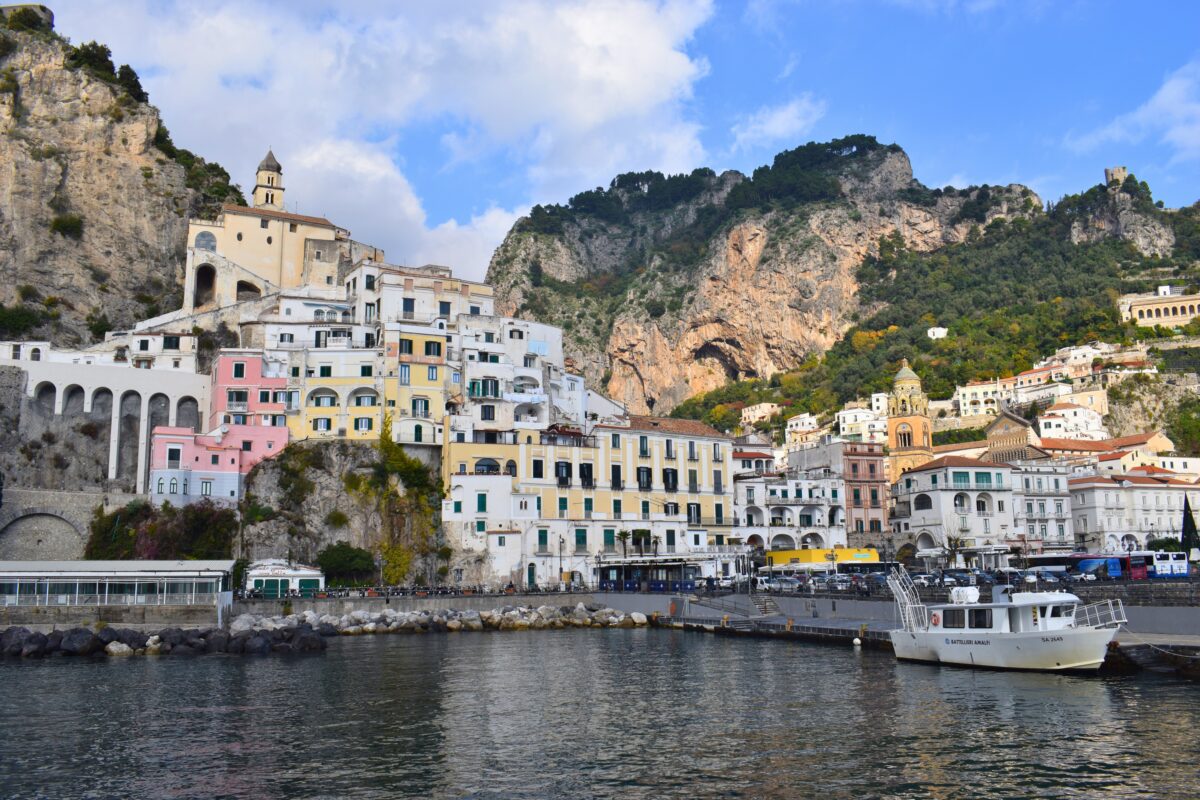
Best Time to Visit
The seasonal dynamics of the Amalfi Coast aren’t much different from the rest of the Mediterranean. It’s hot in summer and wet in winter. Shoulder season (late spring and early autumn), on the other hand, gives you the best visiting conditions: it’s not too cold and the crowds aren’t there. However, Amalfi isn’t just another Mediterranean attraction, it’s one of Europe’s most visited coastal strips.
It’s during the summer that the popularity becomes evident. The Coast enjoys long, sunny days and warm Tyrrhenian Sea waters. But moving around is an issue. Ferries get extremely crowded, the narrow roads cause traffic jams and getting on a bus is a challenge. While it’s the best time to visit weather-wise, peak season (July and August) can be brutal. The same goes for the prices. Expect astronomical prices for accommodation in Positano and Amalfi.
Spring (April and May) and early autumn (September to October) are fantastic seasons to visit the Amalfi Coast. It’s that sweet spot, when the towns are still lively, the skies are mostly clear, and the water has a nice swimming temperature. This time is great for hiking the striking mountain treks, sampling local cuisine, and discovering the rich traditions of the Amalfi Coast.
If you don’t mind experiencing this divine coast at its most moody and pensive, winter is a good time to town-hop. Buses and ferries (although with limited service) will be almost deserted. Life slows down, and cloudy skies are there. December sees the coastal towns glisten with Christmas decorations. Without a doubt, winter is the most wallet-friendly time to be on the Amalfi Coast.
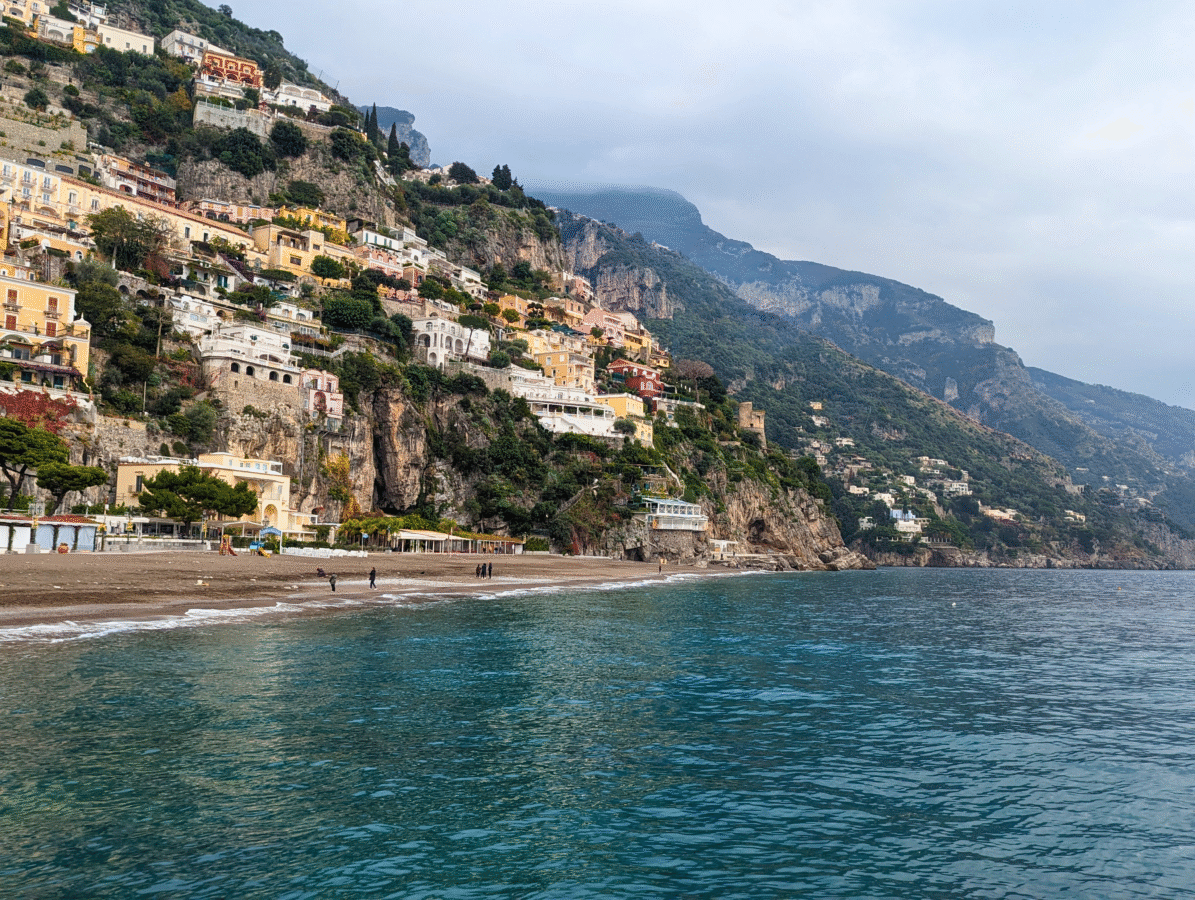
Best Areas to Stay
The Amalfi Coast stretches for over 30 miles between Sorrento and Salerno. The towns are connected by the famed 163 Amalfitana (or Amalfi Drive), an ultra-scenic but narrow road with killer sea views.
An optimal Amalfi stay starts from 4 days to visit the top attractions without rushing. But you can spend a week or more for better immersion in the rich local traditions and exploring many hiking trails and beaches.
Here is the guide for the best areas to stay:
Amalfi
Best for the local lifestyle and transport connections
Strategically located in the center of the Coast, Amalfi is a perfect base for exploring. While it lacks the drama of Positano, the town features accessible flat streets, a nice central beach, and, most importantly, the bus and ferry connections to all the major coastal towns and villages.
Positano
Best for stunning views and coastal luxury
It’s the Amalfi Coast from the tourist brochures. Positano is the most Instagrammed and chic out of all the area’s towns. It’s home to luxurious perched hotels, exclusive beach bars, and Michelin-starred restaurants. Also, Marina Grande and Fornillo beaches are some of the Amalfi Coast’s dreamiest. Positano is the ultimate place to stay for honeymooners and romance-seekers. Prices can bite, but that’s what you get at one of the world’s most stunning seaside towns.
Maiori
Best for budget-friendly accommodation and beach leisure
The longest beach on the Amalfi Coast is in Maiori. The flat geography makes it a more approachable destination, where you won’t have to climb hills. Maiori is the Amalfi Coast’s ultimate beach resort—you’ve got a wide choice of hotels, B&Bs, and villas. Staying here will be cheaper than in Amalfi or Positano, and you’re just a short ferry ride away from both. Walking distance to Minori (a picturesque fishing town) is a bonus.
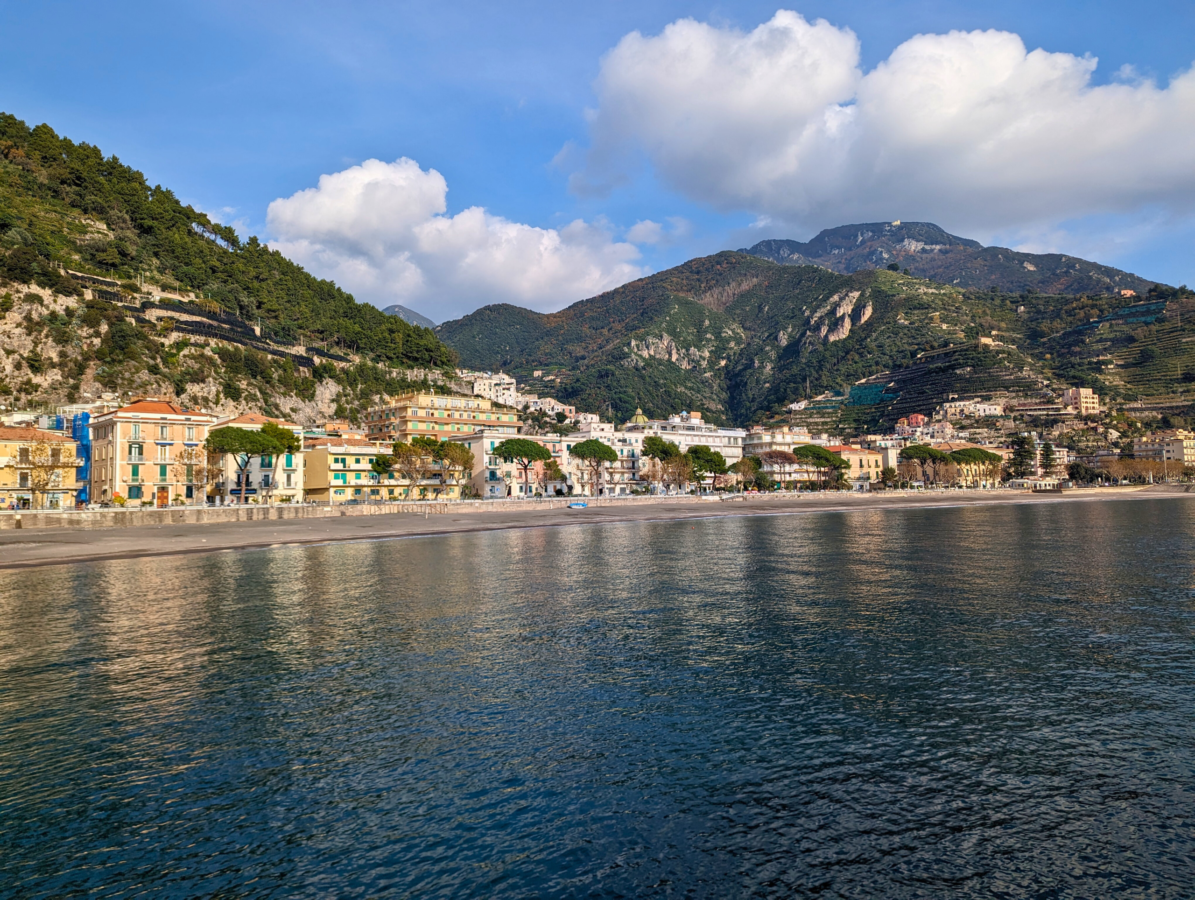
Vietri sul Mare
Best for artisanal traditions and train connection
Vietri sul Mare is the only Amalfi destination with a train station. This makes it a perfect hub for combining coastal excursions with day trips to nearby Pompeii, Naples, and Vesuvio. It’s also a charming town with centuries-old ceramic traditions, a picture-perfect historic center, and some of the best sandy beaches on the Amalfi Coast.
Salerno
Best for an affordable base and a local Italian experience
Salerno isn’t technically a part of the Amalfi Coast, but it’s the starting point for buses and ferries that go to the fabled coastal towns. Locating yourself here gives you the best of both worlds. You’ll live in a mid-sized Campania port town with affordable accommodation and a myriad of restaurants to choose from, while being very close to all the Amalfi Coast action. Vietri sul Mare, for example, is just 8 minutes from Salerno railway station.
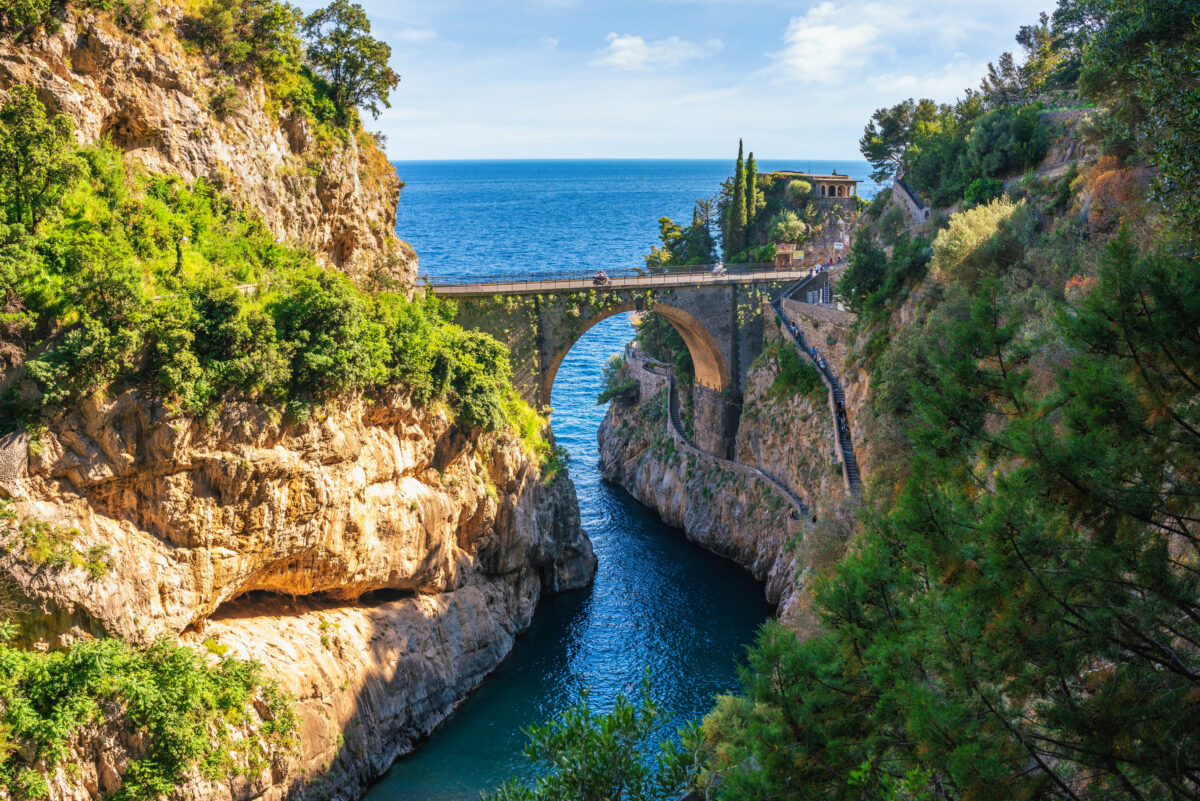
Top Attractions
Furore Fjord
Although called “a fjord,” it’s a far cry from the epic Norwegian glacial landscapes. But this place is among the most striking places to bathe in the Amalfi Coast: a dramatic inlet under the old bridge, surrounded by the tall cliffs. There’s a bus stop atop the bridge. Be prepared to hike for over 10 minutes down the twisty footpath. Alternatively, you can hire a boat.
Medieval architecture of Amalfi
Of all the towns on the coast, Amalfi features the most spectacular architecture. Back in medieval times, this town was a powerful maritime republic. Visit the striking Cathedral of St Andrew the Apostle to marvel at the unique blend of Romanesque and Neo-Moorish architecture. Then, step inside the photogenic Cloister of Paradise with the intricate arches and Moorish gardens. Learn more about the town’s medieval history in the austere Ancient Arsenal in the harbor.
Breathtaking vistas from the Ravello terraces
Nicknamed “Amalfi Balcony” for its perched position and incredible views, Ravello is an inspiring visit. It has long been a place where the region’s aristocrats built their villas. Visited by Wagner, the 19th-century Villa Rufolo is an essential stop. Its gardens with coastal views are magical. More dramatic panoramas await at Terrazza dell’Infinito at Villa Cimbrone, which may well be one of Europe’s most scenic viewpoints.
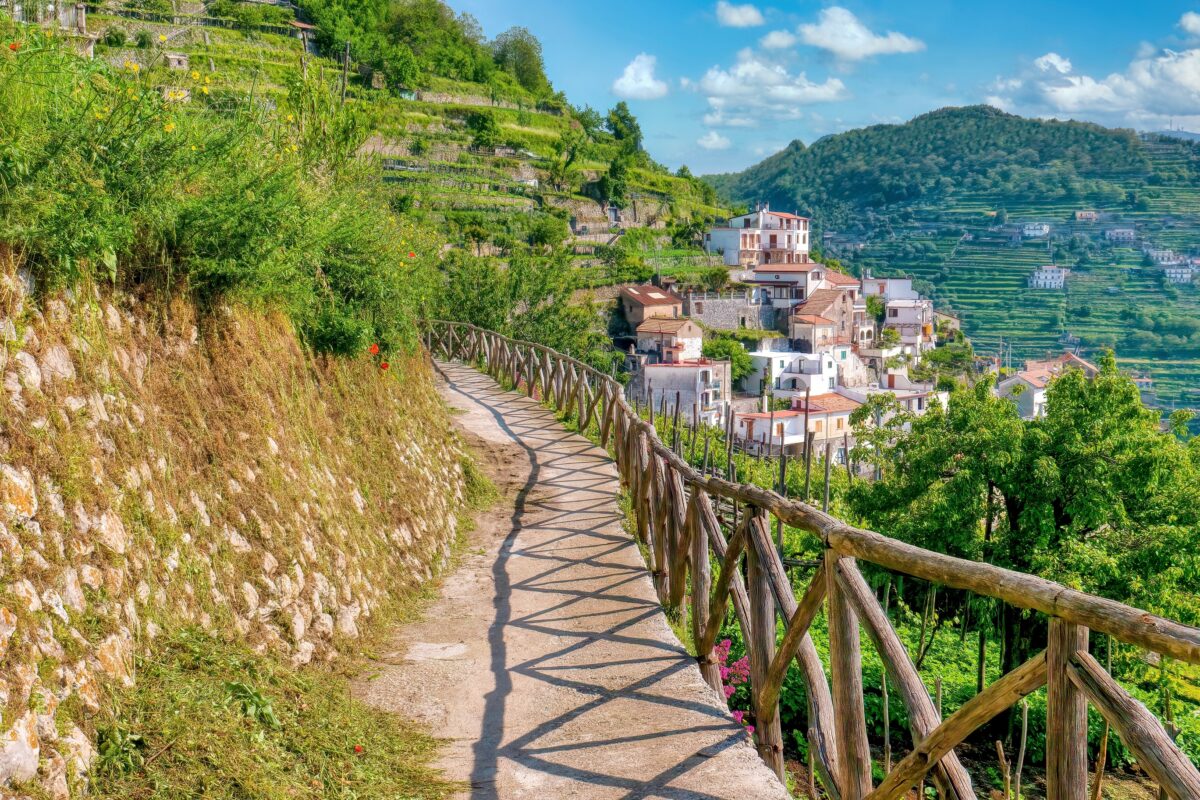
Vietri sul Mare ceramic factories
Wandering through Vietri streets is a delight—the houses are covered in colorful majolica, and multicolored ceramic statues dot the steps. The local ceramic traditions go back to the Renaissance times. Today, it’s among Campania’s most important pottery centers with museums, galleries, and factories devoted to the craft. Visit the Solimene Ceramics Factory for the biggest choice of local pottery.
Sentiero dei Limoni
The Amalfi Coast is fantastic for hiking. Connecting Maiori and Minori, Sentiero dei Limoni (or “The Path of Lemons”) is the trail to embark on for both the views and the local character. This easy trek features many steps, taking you to the awe-inspiring coastal vistas. Its main draw is the lemon groves—the Amalfi Coast has been a center for lemon production for centuries.
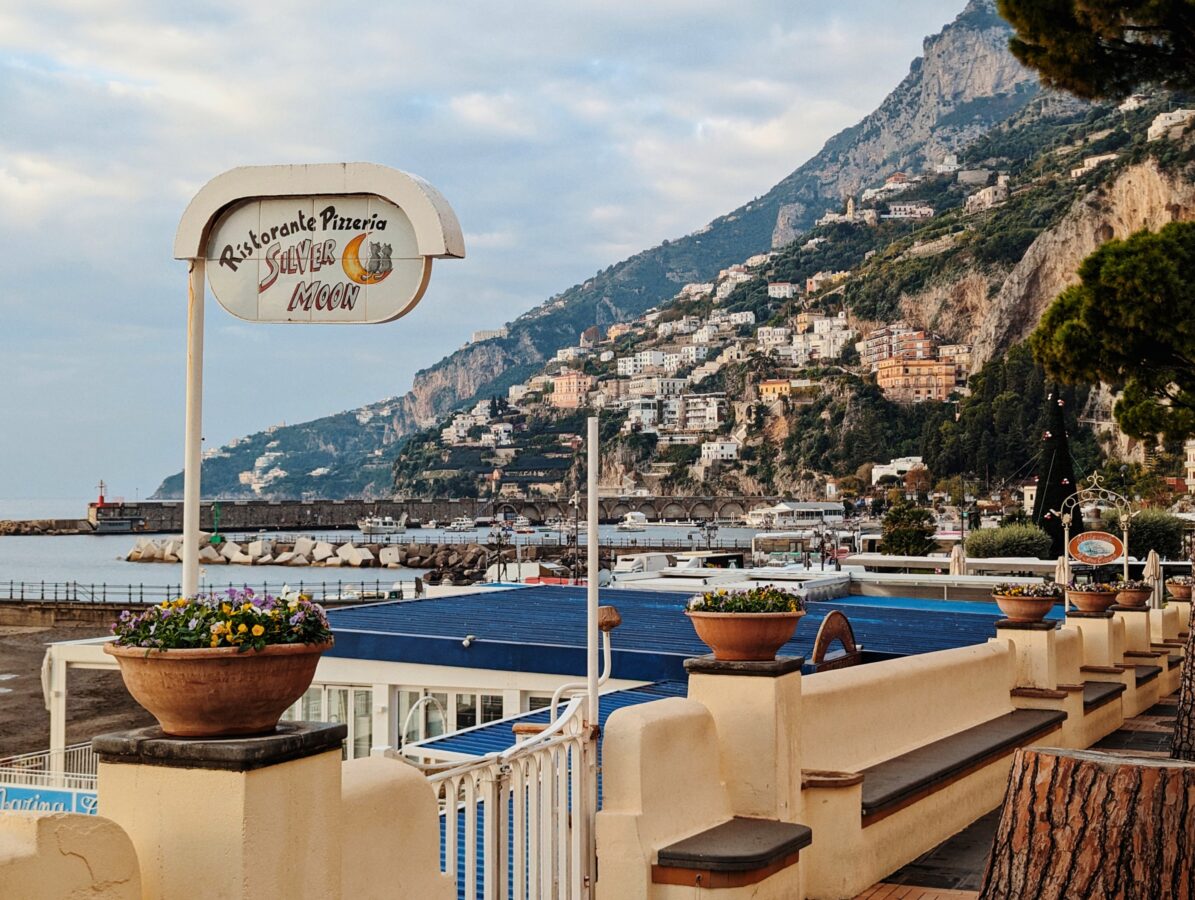
Dining
The gastronomy of the Amalfi Coast is classic Mediterranean. Expect lots of fresh seafood, olive oil with every dish, mouthwatering tomatoes, and a great variety of locally produced cheese. But there’s one ingredient that makes the Amalfitan cuisine stand out: lemons.
The zesty yellow citrus finds its way to pastas, appetizers, and even desserts, giving the local cuisine a very distinct, unique flavor. Of course, you should have lemon-based dishes while here. Start with spaghetti al limone (a pasta dish sprinkled with lemon juice), try delizia al limone (a cake with a lemon filling), and enjoy the world-famous limoncello liquor.
The Amalfi Coast is also famous in Italy and abroad for its local specialties. The medieval fishing town of Cetara is renowned for its anchovies. Amalfi restaurants serve a special type of pasta called scialatielli. Ndunderi (or ricotta gnocchi) is the trademark of Minori. Enjoy the heavenly sfogliatella “Santa Rosa” (a shell-shaped sweet pastry with cream) in Conca dei Marni.
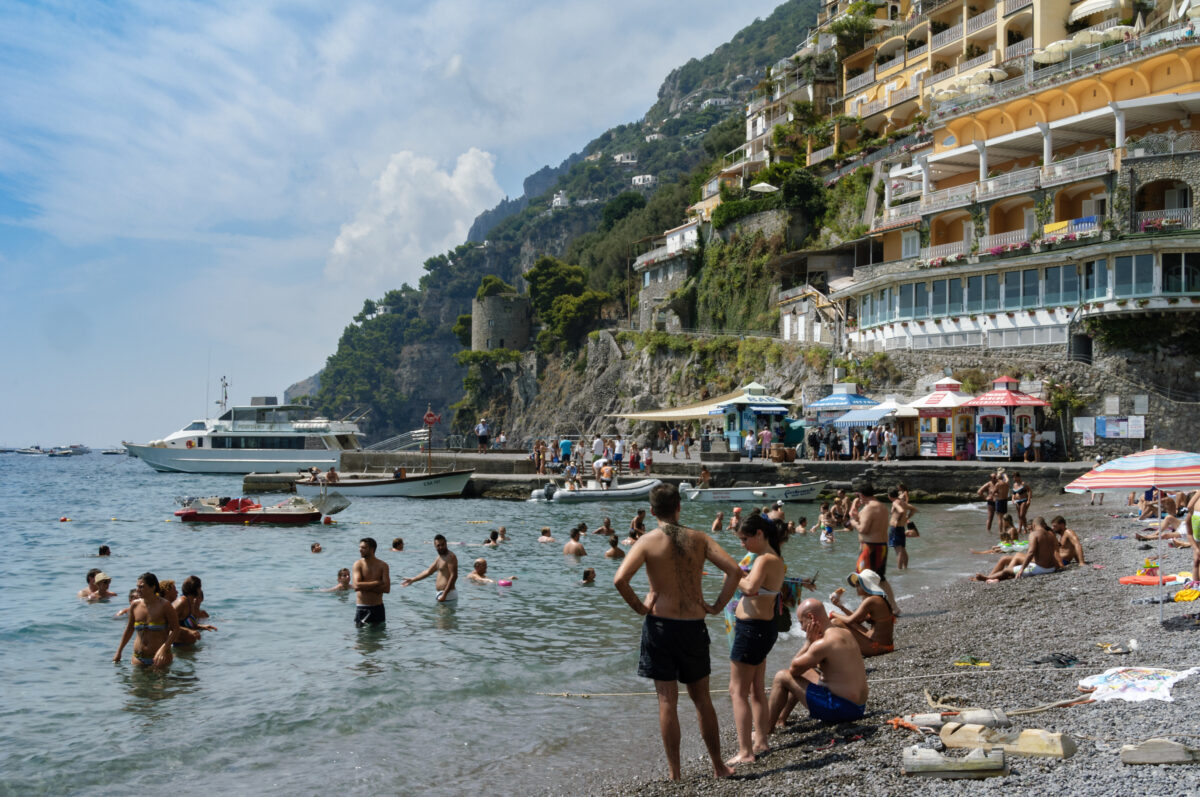
Nightlife
If you’re looking for Mykonos or Ibiza-style discoteques and loud bar-filled strips, the Amalfi Coast is not that place. The only nightclub open until dawn is Music On the Rocks in Positano. Located inside a grotto, it’s a glamorous establishment for dancing and drinking next to the sea.
If you crave a party, Naples offers a much more varied nightlife experience. Two hotspot areas are Piazza Bellini and Chiaia.
As Europe’s most sought-after honeymoon destination, the Amalfi Coast is about charming evening strolls, cozy wine dates, and dreamy Aperol drinking from the sea-facing terraces of the perched towns.
The Ocean Bar in Positano has a fantastic beachside location and a comprehensive drinks menu. An Instagram-friendly panorama awaits at Franco’s Bar. La Giara Rooftop Bar is another scenic establishment.
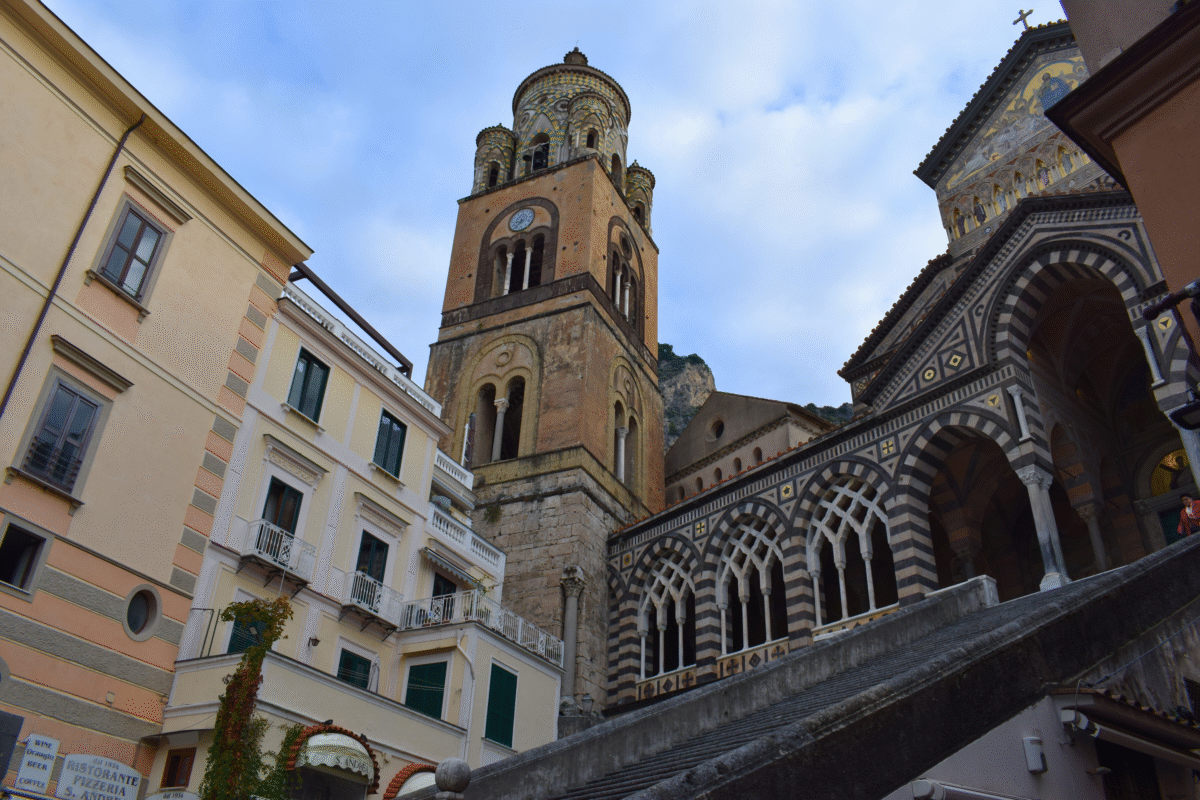
Local Culture
The unique geographical position on the craggy Sorrentine Peninsula made the Amalfi Coast, in a way, isolated from the rest of Campania. The towns of the area have strong local traditions. Lemon cultivation, centuries-old fishing history, and ceramic production define Amalfi’s culture.
The Amalfi Coast has also been one of the original tourist destinations at the dawn of European travel in the 19th century. Later, in the 20th century, it became a hotspot for the jet setters. You may have seen the dramatic Amalfi landscapes in films as Federico Fellini’s “Roma,” Christopher Nolan’s “Tenet,” and “Under the Tuscan Sun” with Diane Lane.
Taking place throughout July and August, Amalfi Summer Fest is a celebration of music in the town of Amalfi. It features an eclectic lineup of jazz, blues, funk, pop, and classical music. The annual Ravello Festival (also known as the Wagner Festival) is another summer highlight for all classical music lovers. The main stage is at the Belvedere of Villa Rodolfo, a panoramic terrace with stunning coastal views.
Visiting one of the religious processions is an unforgettable experience in Amalfi. There’s Ferragosto in Positano (August 15) with a pyrotechnic show, Saint John the Baptist Feast Day in Vietri sul Mare (June 15-24) and the Feast of St. Andrew the Apostle in Amalfi (June 27), with colorful town parades.
Insider Tips
- Bus is the cheapest transportation. You can only buy tickets at kiosks and bars. The map of the sale points is available on the official website. Save money by purchasing a 24-hour COSTIERASITA pass (10 EUR). It entitles you to an unlimited number of journeys between Sorrento and Salerno.
- Ferry is the best option in the high season. Tickets start from 9 EUR (between Amalfi and Positano) to up to 25 EUR for further connections, such as Capri and Sorrento. Buy tickets online at the Travelmar website.
- Renting a car is a great idea during the low and shoulder seasons. However, we would advise against it in summer. In July, August, and September, the Amalfi municipalities introduce restrictions for cars with non-resident plates. Traffic jams and difficult driving conditions on SS163 Amalfitana are another issue for drivers.
- The Amalfitan towns are small, and the accommodation options are limited. Prices increase in the tourist hotspots like Positano, Amalfi, and Ravello. If you are planning an Amalfi Coast honeymoon, book well in advance.

